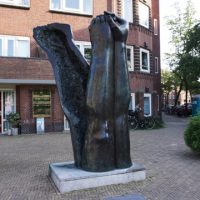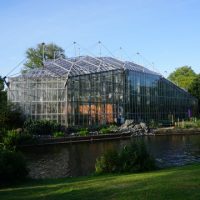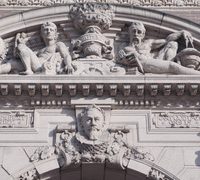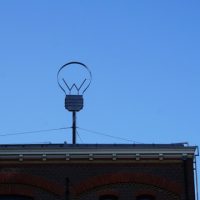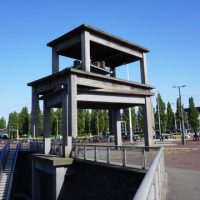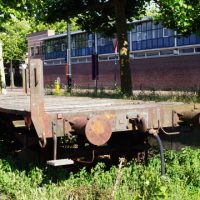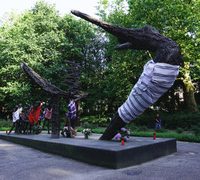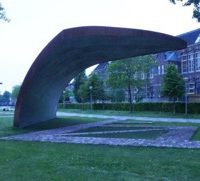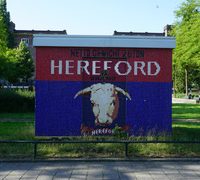National Slavery Monument, Erwin de Vries, 2002
Oosterpark
On 1 July 1863 the Netherlands was one of the last countries in Europe to abolish slavery. This day is celebrated every year with Ketikoti, the word for ‘broken chains’ in Sranantongo (one of the creole languages spoken in Surinam). Nevertheless, those who had been made slaves were forced to continue their hard, unpaid labour for another ten years. The bounty of three hundred guilders that was paid to the slave owners for each emancipated slave intensified the hunt for runaways in those years. Another celebration is the Day of the Struggle for Freedom. It is held on 17 August, the day in 1795 when more than two thousand people living in slavery on Curaçao revolted.
The first slavery monument in Amsterdam had to wait until 2002 to be unveiled. This work by the Surinamese artist Erwin de Vries represents the past, present and future. The thin figures chained to one another represent the slave past. A figure walks beneath an arch, breaking through the wall of resistance: the present. And in front, big, strong and glorious: the future. Freedom! De Vries called the making of the monument a spiritual experience. ‘I felt the pain of the slaves, including my ancestors. But I also felt their enormous strength’.
The monument was the result of a petition initiated by the Afro-European women’s movement Sophiedela. Many Dutch whose ancestors had been victims of slavery felt the need for recognition, because that recognition had been long in coming. On the day of the opening many Surinamese, Antilleans and other interested parties gathered on this spot for the unveiling. They were disappointed: they got no further than fencing covered in black plastic that prevented them from seeing anything. The ceremony took place behind the fencing in the presence of politicians, the Dutch Queen and invited guests. The people for whom the monument had been so pressing were not invited. The mood was agitated.
There was a further clash in 2005. None other than Rita Verdonk, Minister for Immigration and Integration at the time and notorious for her tough line on immigration, came to the National Slavery Monument to celebrate Ketikoti. Her political ideas were the embodiment of all that the monument stood against: discrimination, lack of freedom and viewing other cultures as inferior. She was not welcome, her speech was drowned by drumming, and she left the scene.
In 2008 Verdonk founded Proud of the Netherlands. This political party was created to restore the pride that she felt many Dutch had lost through attacks on the traditional celebration of St Nicholas with a black-faced helper and slavery monuments that were, in her words, ‘meant to portray us in a negative light’. Prime Minister Balkenende also spoke of pride in 2006. He coined the notorious term ‘VOC mentality’ with reference to Dutch entrepreneurship and its commercial mentality. It is a recurrent phenomenon in the remembrance of the colonial past: the selective approach with which a Dutch culture is associated with all the positive aspects of the Golden Age and distances itself from the negative ones. The Golden Age is seen as the crucible of Dutch identity. If so much pride can be taken in this period, why is a blind eye turned to the fact that the Dutch whose ancestors stood on the other side of that history always bear the legacy of that history?
‘Shared past, shared future’ are the words on a plaque on the side of the monument facing the Oosterpark. But the shared past has not yet been given form. The monument by Erwin de Vries seems to betray what we stand for. Real freedom lies somewhere in the future. The present is still only a small archway in the wall of resistance.

